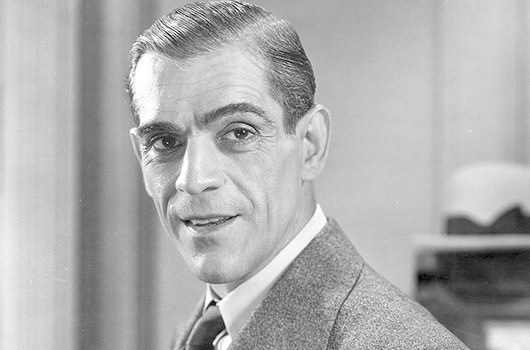
The Top 10 Boris Karloff Movies
Robert Segedy offers a retrospective on the English horror star’s greatest achievements.
The man born William Henry Pratt on November 23, 1887 in Camberwell, London, England became better known by his stage name, Boris Karloff. The youngest of nine children, he went on to find fame in the horror genre as the Frankenstein Monster, The Mummy, and many other roles. He perhaps is best remembered for his role as The Grinch in the Dr. Seuss animated television special, The Grinch that Stole Christmas.
In his early film roles, Karloff often portrayed Arab or Indian villains; it was not until the film Frankenstein (1931) that he finally caught his big break, and it was his silent performance as the Monster that propelled him to true stardom. For your approval is Boris Karloff’s Top Ten Films.
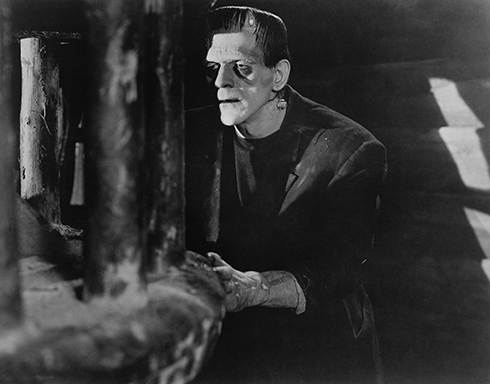
Frankenstein (Universal 1931), director James Whale
In the European village of Goldstadt, Dr. Henry Frankenstein (Colin Clive) is obsessed with re-creating life from the parts of various corpses that he and his assistant Fritz (Dwight Frye) have retrieved from the gallows and the local graveyard. Fritz is sent to retrieve a normal brain from the Goldstadt Medical College, but mistakenly returns with the damaged brain of a criminal psychopath. This is where all the trouble begins; if Fritz had not dropped the healthy normal brain, then possibly Henry’s experiment could have turned out a success, but instead the creature is cursed right from his inception. “And look, here’s the final touch. The brain you stole, Fritz. Think of it. The brain of a dead man waiting to live again in a body I made with my own hands, with my own hands.”
But Henry is to learn that man is not destined to play God; he can only bring death, not life. Just before he re-animates his creation, Henry is interrupted by the intrusion of Dr. Waldman (Edward Van Sloan), Henry’s old mentor, Elizabeth (Mae Clarke), his finance and his friend, Victor (John Boles). The three are there in concern for Henry’s sanity, but Henry is persistent, there is no turning back.
In an amazing scene of early special effects, Henry’s lab is alive with the sounds of electricity as the various transformers and dynamos are crackling and sparking. The great moment awaits: as the lab pulses with life, the creation is raised upward to an opening in the ceiling where lightning strikes the immobile body. At first, Henry’s spirit is crushed, but then the creature’s right hand twitches and he howls with delight: “Look! It’s moving. It’s alive. It’s alive….It’s alive, it’s moving, it’s alive, it’s alive, it’s alive, it’s alive, it’s alive! Oh – in the name of God. Now I know what it feels like to be God.” The creature is finally alive.
Henry is distracted with his upcoming nuptials with Elizabeth, and doesn’t want to abandon his new toy. Speaking with Dr. Waldman, Henry is quite calm regarding the creature and its potential danger. At this point in time, we have yet to clearly see the monster in his full glory; Whale wisely has just given us glimpses of various limbs and features. When we finally get to see the monster, Karloff backs into the room and then slowly turns, revealing his face to be a gloomy horrible creation, his face featuring a prominent forehead that overshadow the eyes, a large jagged scar runs along the jawline, and twin metal bolts protrude from his neck. This is the face that is now permanently emblazoned in our collective unconsciousness when we think of Frankenstein’s Monster.
Karloff endured four hours a day under the hands of make-up man Jack Pierce and needed to wear special shoes that weighed 11 pounds each and added four inches of height; the electrodes on the sides of the neck would leave scars that would never fade. Karloff was known to eat and sleep in the make-up, rather than endure taking it off. A little known fact is that Bela Lugosi was originally considered for the role of the monster and even developed an early prototype of what he believed that the creature should look like, but ultimately he refused the role because the Monster did not speak.
The original plan was for Henry to leave to be wed while Dr. Waldman is left behind with the creature in order to dissect it, but the creature manages to escape the castle not before it murders Fritz for torturing it with a torch. The creature’s inbred fear of fire is something that will become a reoccurring theme in later films. After wandering into the village, the monster accidentally murders a farmer’s young daughter and is now pursued by a mob of angry peasants. Bearing torches and pitchforks the villagers have trapped the monster on top of the old mill; the monster has found his creator earlier and now tosses him from the mill, where his fall is broken by one of the vanes.
With the mill in flames, the creature is trapped and presumed dead. The next scene is one of celebration as Henry and Elizabeth toasted by his father, the baron. As far the villagers are concerned, the monster is dead and that is the last that we will see of him. Oh how wrong they were.
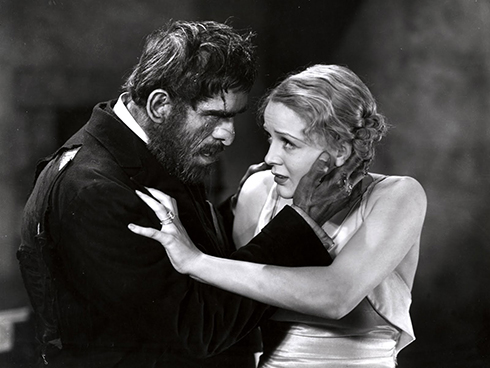
The Old Dark House (Universal 1932), director James Whale
Director James Whale and Karloff would once again team up in Universal’s production of The Old Dark House. Based on the novel, Benighted (1927) by J. B. Priestley, this early pre-code production features a group of five stranded travelers in Wales as they are forced to stay the night at the house of their hosts, the extremely odd Femm family.
Using the already old premise of travelers stuck in an old creepy house, Whale has a great time directing this classic film featuring the talents of Charles Laughton, Raymond Massey and Melvyn Douglas, but it is the duo of Emma Dunn and Ernest Thesiger as the Femms that really bring this film to life. Karloff is featured as the disfigured mute manservant Morgan, whose very essence suggests an escaped sexual criminal; the bizarre scene at the dinner table where he develops an obsessive interest in Margaret Waverton (Gloria Stuart) borders on the obscene.
It seems that a murder has occurred in the distant past and the Femms are eager to keep their crazed brother Saul under lock and key, but a drunken Morgan gets the bright idea to unleash the raving madman on the unsuspecting guests and when he does, the chills really begin to kick in. Whale was probably most comfortable with this film as it features some splendid acting by Laughton and Thesiger and great dialogue that really clips along. Karloff is awesome as the large, threatening mute servant Morgan and his dangerous presence, though silent, is still rewarding.
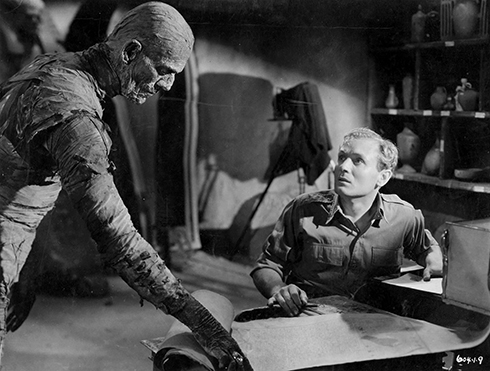
The Mummy (Universal 1932), director Karl Freund
By this time, Universal had realised that chills at the theatre equaled thrills at the box office and so given the successes of Dracula and Frankenstein, Karloff was once again called upon to undergo some make-up magic at the hands of Jack Pierce, this time in a duel role as the high priest, Ardath Bey, and as the monster in question, The Mummy.
The plot is very simple and in its basic structure is a love story; in 1921 an Egyptian expedition uncovers the tomb of Im-ho-tep, a man that was buried alive because he was trying to raise his dead lover, the princess Ankh-es-en-amon (Zita Johann). Buried with Im-ho-tep was the Scroll of Thoth which promises to resurrect the dead and reunite the separated lovers. Ten years later, Im-ho-tem is wandering Cairo as a modern day Egyptian, Ardath Bey (Karloff); he is looking for the reappearance of his lost love and he meets Helen Grosvenor (Zita Johann), a woman that bears a striking resemblance to Ankh-es-en-amon. Ardath Bey believes that Grosvenor is the princess reborn again and he plans to kill her and mummify her, thus reclaiming his long lost love. While under a trance, Grosvenor remembers her past life and prays to a statue of the goddess Isis; the statue comes to life and emits a powerful beam that destroys the Scroll of Thoth and hereby also renders The Mummy to a heap of dust.
Heavy on gothic symbolism, Director Freund – he was the cinematographer on Dracula – creates a wonderful world of Egyptian motifs and mystery, but it is Karloff that brings the character to life, with his yearning for a love that was whisked away from him. Karloff’s make-up once again required him to sit in Pierce’s chair for lengthy amounts of time as he was wrapped with an acid stained and oven baked set of bandages, but the results are splendid. The Mummy would of course, return to frighten movie goers again and again.
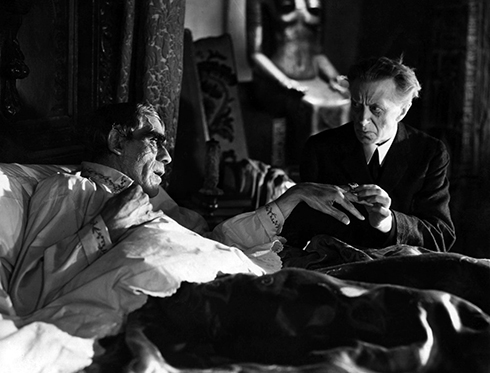
The Ghoul (Gaumont British 1933), director T Hayes Hunter
Long since thought lost, this film once again has Karloff in an Egyptian type role. Professor Morlant (Karloff) is a crazed type of Egyptologist; he keeps a statue of Anubis in his gothic home and pays a fortune for a jewel that promises the holder the ability to return from the grave. His servant Laing (Ernest Thesiger) promises his master that he will bandage the jewel in his hand at the moment of death but at the last moment becomes greedy and hides the jewel in a can of coffee.
Classic Monsters of the Movies issue #6 features The Ghoul
An assorted group of motley mourners gather at the professor’s house to hear the reading of the will and suddenly the game is afoot as the jewel is sought out by a number of suspicious characters. Amongst them is the professor’s lawyer, Broughton (Cedric Hardwicke), a vicar named Nigel Hartley (Ralph Richardson), and two cousins, Ralph Morlant (Anthony Bushell) and Betty Harlon (Dorothy Hyson) who have been raised to hate each other. All of them are set loose in the professor’s gothic abode while Morlant returns from the grave seeking revenge on whoever has the jewel in their possession.
In the end, all loose ends are neatly tied up and it is revealed that the professor had suffered from a cataleptic seizure and wasn’t actually dead. The Ghoul is a British film that is fairly enhanced by the Director of Photography, Gunther Krampf, he of Nosferatu (1922) fame.
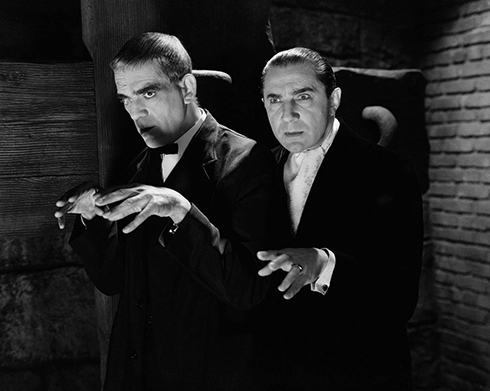
The Raven (Universal 1935), director Lew Landers
Obsessive love was a popular theme in the 1930’s and in The Raven, Karloff teams up with Bela Lugosi in one of eight films that they would eventually make together. Even though Lugosi has the lead in this film, Karloff would be the sympathetic character to audiences.
Lugosi plays Dr. Richard Vollin, a brilliant but retired surgeon that is obsessed with everything Edgar Allen Poe, including a basement full of various torture instruments straight out of his stories. When Dr. Vollin performs an emergency surgery on famous dancer, Jean Thatcher (Irene Ware), he becomes infatuated with her; he will do anything to prevent her upcoming marriage to her fiancé Jerry (Lester Matthews) and he begins to enact a fiendish plan to get revenge on the unsuspecting young woman.
Escaped convict Edmond Bateman (Karloff) is manipulated into cooperating with Vollin; an operation to change his appearance goes horribly wrong and Bateman is now more hideous than ever. Vollin promises that he will correct the surgery if Bateman helps him carry out his twisted plans and Bateman has no choice but to agree. Vollin hosts a dinner part for Jean, Jerry and her father, but in reality it is merely a trap to allow him to torment his guests in his torture devices.
Even though the film is entitled The Raven and is supposedly inspired by the works of Poe, there is very little that is associated with Poe other than a stuffed raven on Vollin’s desk and the pit and the pendulum set up in the basement. In the end, Bateman turns the tables and saves the couple from the savagery of Vollin. Bateman is gunned down by the maniacal Vollin who meets his end in one of his own devices. Karloff plays against type and is actually a sort of good guy despite his hideous appearance.
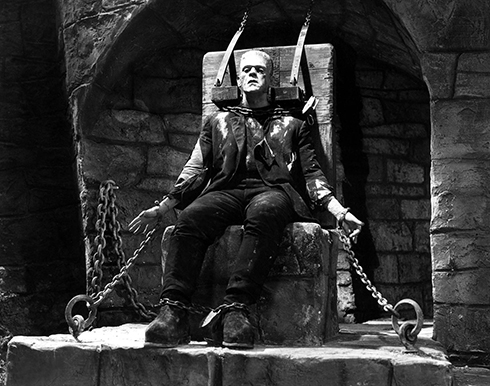
Bride of Frankenstein (Universal 1935), director James Whale
This film was a return to the greatness that Universal had enjoyed with the financial success of Frankenstein, once again joining Karloff with director James Whale. Also joining the sequel is Colin Clive, reprising his role as Henry Frankenstein, with supporting cast members Ernest Thesiger as Doctor Septimus Pretorius and Elsa Lanchester in the dual role of the bride and Mary Shelley.
The film opens on a storm night as Percy Bysshe Shelley (Douglas Walton) and Lord Byron (Gavin Gordon) praise Mary Shelley (Elsa Lanchester) for her story of the Promethus Unbound, Frankenstein. Mary Shelley tells her audience that the monster was not destroyed and that there is more to tell; the scene shifts to the end of the 1931 film and continues from there.
The villagers are gathered around the smoldering ruins of the mill and are happy that the creature has been destroyed, but Hans (Reginald Barlow), the father of the little girl drowned in the first film, is not yet satisfied and he wants to see the burned remains. Hans falls into a flooded pit where the creature is safely hiding and is promptly strangled. Rising from the pit, the monster throws Hans wife to her doom; he next encounters Frankenstein’s maid, Minnie (Una O’Connor) who flees in terror.
Back at the castle, Henry’s body is carried in but he is not dead yet. Nurtured back to health by his finance Elisabeth (Valerie Hobson), Henry is soon well and even though he has disowned his creation, Elizabeth is still frightened; her fears are soon confirmed with the unwelcome visit of Dr. Pretorius, a scientist that has been experimenting with similar investigations.
Soon Henry is back in the lab, but this time the goal is to create a mate for the monster. Meanwhile the monster roams the woods, but soon he meets a gentle blind man that shows no fear towards the creature and the two become friends, for a while. In this scene Karloff displays why his performance as The Monster is one for the ages; his creature is a lonely individual, trapped in a non-dying shell that he never requested; the blind man introduces the monster to the simple pleasures of music and a good cigar. Even though still fearful of fire, the monster is able to speak a few words and this humanises him even further. The audience finds itself sympathetic to its plight and it is Karloff’s opportunity to redeem the monster that makes him an iconoclastic figure in our collective memories.
The film moves along briskly and soon a mate is ready for the monster. With Dr. Pretorius’ help, Henry is forced to re-create life again from the parts of the dead, and so with a return to the electricity filled lab, we once again are witness to an unholy process, but the bride does not seem too affectionate towards her mate. The bride (Elsa Lanchester) comes to life with a lurch and cat like moments, her hair a bouffant raised by lightning, her arms swaddled in bandages. She does not speak, but instead hisses her reply to the monster’s gentle call of “friend”. The Monster allows Henry and his bride to flee before pulling a switch that blows the castle and its inhabitants to kingdom come. Favorite scene: the monster to Pretorius and the Bride, he says “You stay. We belong dead.” An instant classic that bears repeat viewing.
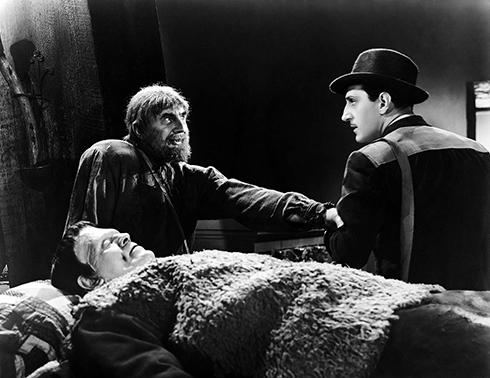
Son of Frankenstein (Universal 1939), director Roland V Lee
He’s back! Karloff and Lugosi are once again teamed up in this sequel to Universal’s previous, Bride of Frankenstein. This time around we have Basil Rathbone as Wolf von Frankenstein, son of Henry, returning to the ancestral home from the US with his wife and child in tow. The villagers are anxious about welcoming back a relative of the man that had previously unleashed horror on their small town, but Wolf reassures them that he has no plans to continuing with his father’s devilish work.
Enter into the picture Bela Lugosi, practically unrecognisable, as Ygor, a ghoulish fellow that had previously been hanged for grave robbing, but he survived the noose, complete with broken neck. While snooping around in the ruins of the family castle, Wolf uncovers the monster; albeit comatose, but still in good shape. He just needs a little juice to revive him to his old self and we will be off again.
The rub comes though with the evil influence of Ygor who plays an odd trumpet looking instrument, and it has a hypnotic effect on the creature. Apparently revenge is Ygor’s motive and he wants to kill the men that were responsible for sending him to the gallows. This time around the monster does not speak; this was on Karloff’s insistence, and the creature is not as sympathetic as the last time we saw him.
Ygor has been instructing the monster to kill various people in the village and this results in Ygor being shot by the Baron and left for dead. The monster discovers Ygor and because he has lost his only friend, strikes out at the Baron and kidnaps his son Peter (Donnie Dunagan). The Baron tracks the monster to the lab, and with the assistance of the town constable, Inspector Krogh (Lionel Atwill) he knocks the lumbering killer into a sulfur pit. I believe that it is Lugosi that steals the film from Karloff with his amazing portrayal of the evil Ygor, and this will be the last time that Karloff will appear as the monster, even though two more sequels will be made.
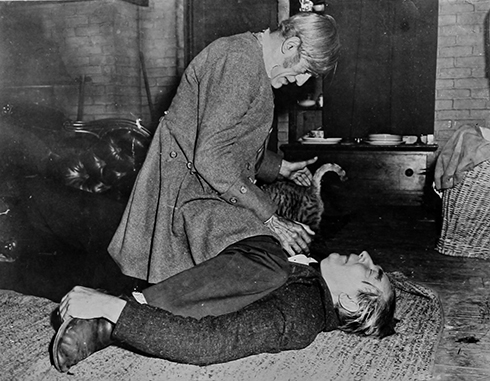
The Body Snatcher (RKO 1945), director Robert Wise
It is Edinburgh in 1831 and Dr. Wolfe ‘Toddy’ MacFarlane (Henry Daniell) runs a medical school, but there is a small problem in obtaining human cadavers to work on. That isn’t an issue for nasty cabman John Grey (Boris Karloff); he is more than willing to help the good doctor out by obtaining fresh bodies even if it means resorting to murder.
The film is based on a Robert Louis Stevenson short story, and the true life crimes of Burke and Hare, an infamous pair of murderers that sold corpses to the Edinburgh medical school. Ace student Donald Fettes (Russell Wade) is hired to be a teaching assistant to Dr. MacFarlane, and he soon uncovers the diabolical truth behind the steady supply of bodies supplied by the ruthless cabman, Gray. Gray holds a deadly secret over the good doctor and it is that covert fact that holds him powerless in the sway of the evil Gray.
Karloff is very good in this film, displaying a calculated criminal coldness that allows him to be nice to a crippled young girl at one time and shortly afterwards allows him to be a cold blooded murderer. Director Robert Wise manages to create a chilly England complete with fog covered cobble stone streets, blind flower girls with beautiful voices, and a real sense of history to this production. Karloff is chilling as the complicated cabman that is robbing graves one minute and petting his pet cat the next. Val Lewton was the producer of this RKO film.
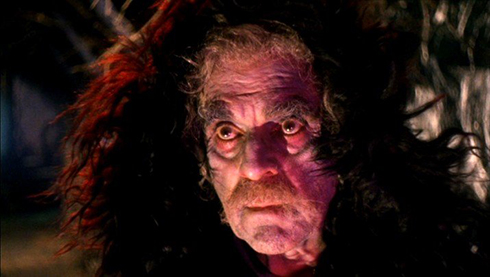
Black Sabbath (AIP 1963), director Mario Bava
Also known as The Three Faces of Fear in Italian. This is an Italian-French horror film directed by Mario Bava and features three separate tales each with an introduction and end piece by Boris Karloff.
The first tale is The Telephone and features Michèle Mercier, as a French call-girl named Rosy. It is late when she returns home and she begins to receive a series of threatening phone calls from someone named Frank, her ex pimp who has been released from prison. Frank threatens Rosy and she in turn calls her old friend Mary (Lydia Allfonsi) on the phone and begs her to come over and stay with her. Little does Rosy know that it is actually Mary that has been making the calls and that she has done so in hope that their shattered friendship will be amended again. Mary comes over to stay with Rosy and she hands Rosy a large knife to protect herself with. As Rosy manages to fall asleep, Mary writes her a letter explaining why she has done what she has, in the meantime Frank breaks into the apartment and kills Mary. He approaches the bed but Rosy plunges the knife into him and kills him.
Classic Monsters of the Movies issue #12 features Black Sabbath
In the second story, based on a Tolstoy story, The Wurdulak, it is 19th Century Russia, Vladimir Durfe (Mark Damon), a nobleman finds a decapitated corpse with a knife in its chest. He removes the blade and finds lodging for the night. Durfe is approached by Giorgio (Glauco Onorato) who tells him that the blade that he found belongs to his father and he hasn’t been seen for five days. Giorgio offers to take Durfe home with him and introduces him to his family.
Giorgio tells Durfe that they are awaiting the return of his father who had gone to battle the Wurdulak, a living corpse who feasts on human blood, especially those of friends and family. The father, Gorca (Boris Karloff) returns home and he doesn’t seem like himself; he is definitely changed. Later that night Durfe and Giorgio are attacked by the Wurdulak, which has taken possession of the father’s body; he escapes with Giorgio’s son as his hostage. In a chilling conclusion, Bava displays why he is regarded as the master of modern horror.
The last story is based on a Chekhov short story, The Drop of Water. This is easily the best of the three episodes and is highly effective in providing the audience with a jolt of the macabre. Just recently I had seen an article in the news that reminded me of this scene. A woman is shown preparing her dinner by herself; she is listening to music and sets the table when the phone rings. We do not hear the voice on the other end of the line but we hear her confirm that yes, she will take the job.
It is revealed that the woman is a healthcare provider, but she is of dubious quality; the older client is discovered dead and while dressing her client the healthcare attendant steals an amethyst ring from the dead woman. The attendant comes to realise rather swiftly that her recently deceased patient is no mere mortal, but a clairvoyant and a dabbler in the black arts. Her house is a mess of creepy doll babies with vacant unseeing eyes and lots of heavy furniture and drapes. After pilfering the ring for herself, the corpse appears animated and is watching her with open eyes; no matter how many times she attempts to close them, the eyes remain open.
Spilling a nearby glass of water sets off a cacophony of sounds; all the faucets start dripping, the sound of one drop of water followed by another is maddening. Outside a storm rages and the flashes of lighting illuminate the darkened room like a strobe light, meanwhile the corpse apparently is on the move. If this doesn’t scare you than you need to check your pulse. Bava’s enchanting use of lighting and color is amazing and this anthology is a great display of Karloff’s low key acting abilities.
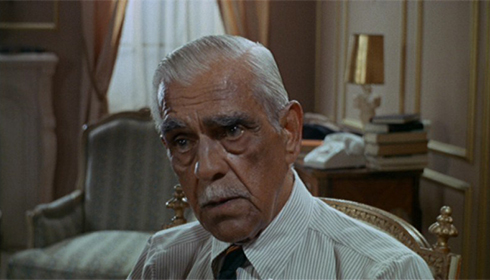
Targets (Saticoy 1967), director Peter Bogdanovich
Loosely based on the actions of mass murderer Charles Whitman at the Texas tower at the University of Texas, Targets was Boris Karloff’s last major US production. Karloff’s Byron Orlok has just about had it with his film career, and he is ready to call it quits, but before he walks away from the bright lights, he needs to make a final appearance at a drive in theatre that is showing one of his films.
Bobby Thompson is a Vietnam veteran with a fascination for high powered rifles; he too is planning a final appearance, but of a different sort. Byron Orlok (Karloff) is named after Max Schreck’s character in the 1922 production of Nosferatu, Count Orlock; meanwhile Bobby Thompson (Tim O’Kelly) is the Whitman like sniper; the two will collide in a suspenseful clash at a Drive In showing Roger Corman’s film, The Terror (1963).
Targets was Peter Bogdanovich’s directorial debut, and he wanted to contrast and compare the modern clean cut killer with the false creation of old Hollywood violence. Of course the real world horror is much more dangerous than anything on the silver screen as the sniper hides behind the screen and shoots at the parked cars like so many sitting ducks. Karloff appears old and tired in this film and it strangely reflects his current state of mind; the old school style of shadows and fog cannot compete with the reality of mass killings that occur daily. Karloff was correct; in two years’ time he would be dead. The world of horror would never be the same afterwards.
Article by Robert Segedy.
Warning: Undefined variable $aria_req in /home/lassicmo/public_html/wp-content/themes/classicmonsters2/comments.php on line 8
Warning: Undefined variable $aria_req in /home/lassicmo/public_html/wp-content/themes/classicmonsters2/comments.php on line 13





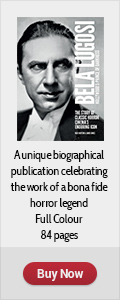
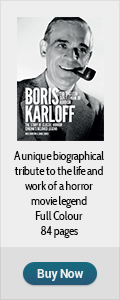



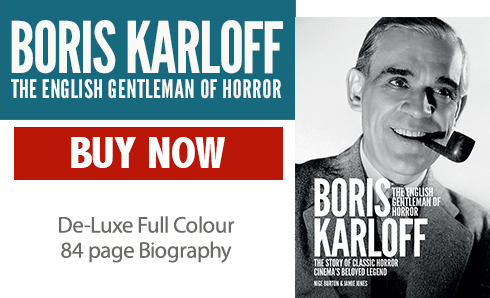
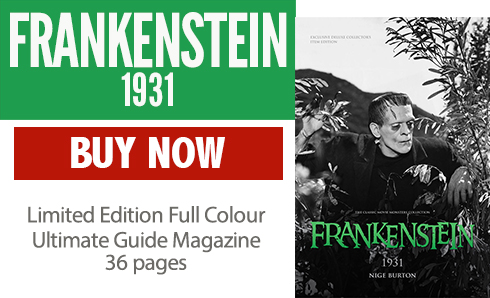
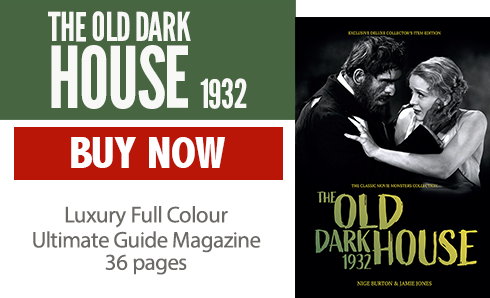

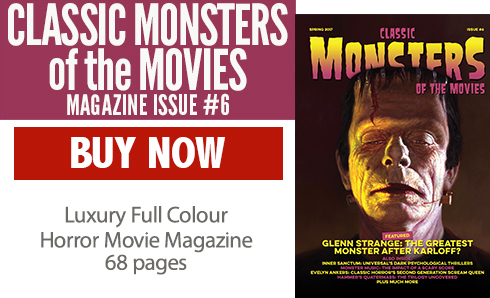
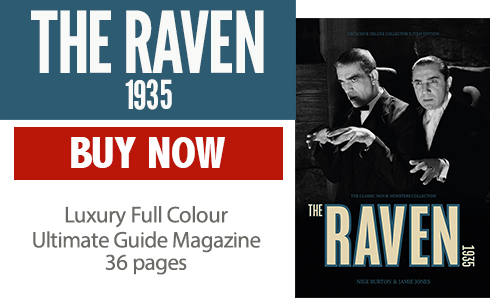
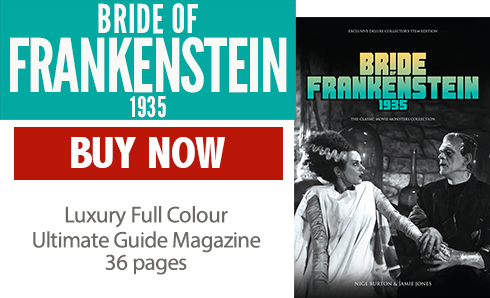
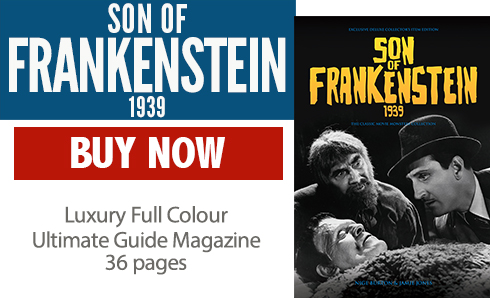
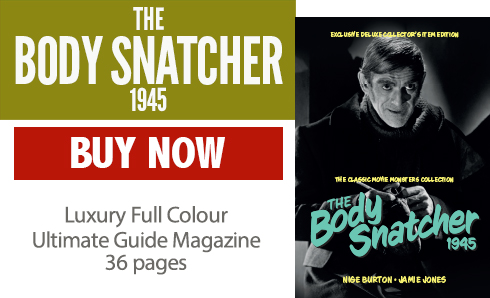
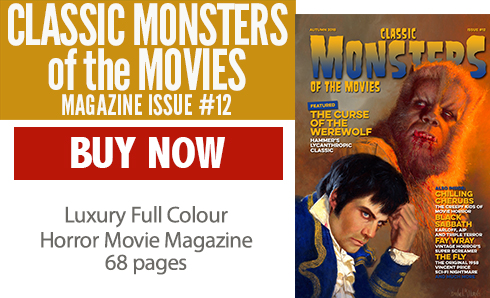
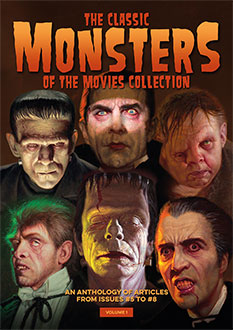
Very good article. The only film I would consider adding is “The Black Cat.” I always thought that was the scariest film I ever saw. I had seen all of these except the last one. I didn’t even know it existed. Thank you for drawing attention to this clever insightful actor. He was a great actor.
The Black Cat was a gem in presenting the frightening world of the occult. Bride and The Bodysnatcher were Karloff’s two best.
Not bad. One entry I differ on is The Old Dark House. Karloff felt his talents were wasted there and I have to agree with him.
From start to finish, despite the obvious continuity flaws connecting it to the original, “Bride of Frankenstein” would be my top choice and “The Black Cat” would be in the top five
Arsenic and Old Lace should be among the Top 10 Karloff films of all time.
After watching several episodes of “Colonel March of Scotland Yard”, I would have liked to see Boris Karloff play more non-horror roles. March is well written, and Karloff comes off as an intelligent, playful person. An entirely different image than what he is famously known for.
Targets!! A classic Karloff film!!